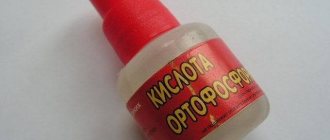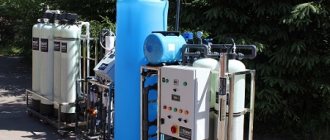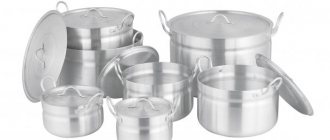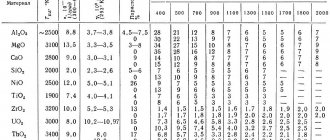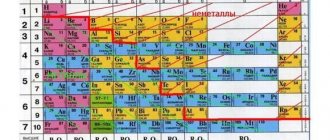Aluminum and air
Typically, the surface of aluminum is always coated with a thin layer of aluminum oxide, which protects it from exposure to air, or more precisely, oxygen. Therefore, it is believed that aluminum does not react with air. If this oxide layer is damaged or removed, the fresh aluminum surface reacts with oxygen in the air. Aluminum can burn in oxygen with a blinding white flame to form aluminum oxide Al2O3.
Reaction of aluminum with oxygen:
- 4Al + 3O2 —> 2Al2O3
Aluminum
Aluminum is a silvery-white metal, one of the most common chemical elements in the earth's crust. It is present in any natural water.
How does aluminum get into water?
Aluminum enters natural waters naturally - in the process of partial dissolution of aluminosilicates and clays, with wastewater from various industries (aviation, electrical engineering, oil refining, chemical industries, construction, mechanical engineering, optics, nuclear and rocket technology), with wastewater from city sewers or precipitation.
Why is aluminum in water dangerous?
Aluminum is characterized by low toxicity, but it has an effect on the nervous system, in particular, it acts directly on the reproduction and growth of cells, and can influence metabolism, mainly mineral metabolism. With an excess of aluminum salts, calcium retention in the body and phosphorus adsorption are reduced. At the same time, the aluminum content increases up to 20 times in the liver, testes, parathyroid gland and bones.
The main clinical manifestations of neurotoxic effects are seizures, impaired motor activity, psychopathic reactions, decrease, and memory loss. Aluminum provokes brain damage, which is characteristic of Alzheimer's disease: there is an increased aluminum content in the hair. Also, aluminum often provokes increased excitability, impaired psychomotor reactions in children, dementia in the elderly, headaches, anemia, liver and kidney diseases, colitis, neurological changes due to Parkinson's disease.
Despite the impressive list of consequences associated with excess aluminum, the body still needs it in small quantities. It has a beneficial effect on the epithelization of bone tissue and skin, and activates certain digestive enzymes.
Maximum permissible concentration of aluminum in water
Aluminum can be contained in water sources in an amount of 2.5-121 μg/cub.m. In the event of acidification of a reservoir, insoluble forms of aluminum are converted into soluble forms, which provokes a sharp increase in its concentration in water. In surface waters, the aluminum content ranges from a few to hundreds of micrograms/dm3, and these figures are affected by the degree of soil acidification. Its concentration in acidic waters can be several grams per 1 cubic meter. The maximum permissible concentrations of aluminum and its compounds in water intended for drinking are 0.2 mg/dm3. . High concentrations of aluminum in water (over 0.2 mg/l) are fraught with the precipitation of aluminum hydrochloride flakes and a change in the color of the water.
Methods for purifying water from aluminum
“Symptoms” indicating the need to purify water from aluminum are organoleptic indicators - suspension (sediment), change in water color. The three most common methods used to purify water from aluminum are distillation, ion exchange and reverse osmosis.
Distillation
Distillation is a thermal method of water purification. Its principle is the separation of a liquid solution and the production of liquid and condensate having different chemical compositions, since the initial solution is deprived of a certain substance.
Ion exchange method
This method involves the use of ion exchange resins, insoluble compounds with functional ionogenic groups that enter into exchange reactions with solution ions. In some cases, ionic groups enter into oxidation-reduction and complexation reactions, which have an intermediate, macroporous and gel structure. To purify water from aluminum through ion exchange, two stages of processing are characteristic: purification through a hydrogen cation filter, and through an anion filter.
Reverse osmosis method
In the process of water purification by reverse osmosis, special semi-permeable membranes are used - partitions that separate the filtrate and the solution containing aluminum. This method is similar to deferrization and involves the separation of water not enriched with aluminum from impurities due to pressure exceeding osmotic pressure in order to allow water to flow through a partition.
Aluminum and water
Aluminum reacts with water according to the following reactions [2]:
- 2Al + 6H2O = 2Al(OH)3 + 3H2 (1)
- 2Al + 4H2O = 2AlO(OH) + 3H2 (2)
- 2Al + 3H2O = Al2O3 + 3H2 (3)
As a result of these reactions, the following aluminum compounds are formed, respectively:
- modification of aluminum hydroxide bayerite and hydrogen (1)
- modification of aluminum hydroxide bohemite and hydrogen (2)
- aluminum oxide and hydrogen (3)
These reactions, by the way, are of great interest in the development of compact installations for producing hydrogen for vehicles that run on hydrogen [2].
All these reactions are thermodynamically possible at temperatures from room temperature to the melting point of aluminum 660 ºС. All of them are also exothermic, that is, they occur with the release of heat [2]:
- At temperatures from room temperature to 280 ºС, the most stable reaction product is Al(OH)3.
- At temperatures from 280 to 480 ºС, the most stable reaction product is AlO(OH).
- At temperatures above 480 ºС, the most stable reaction product is Al2O3.
Thus, aluminum oxide Al2O3 becomes thermodynamically more stable than Al(OH)3 at elevated temperatures. The product of the reaction of aluminum with water at room temperature will be aluminum hydroxide Al(OH)3.
Reaction (1) shows that aluminum should react spontaneously with water at room temperature. However, in practice, a piece of aluminum immersed in water does not react with water at room temperature or even in boiling water. The fact is that aluminum has a thin coherent layer of aluminum oxide Al2O3 on its surface. This oxide film adheres firmly to the surface of the aluminum and prevents it from reacting with water. Therefore, in order to start and maintain the reaction of aluminum with water at room temperature, it is necessary to constantly remove or destroy this oxide layer [2].
Interaction of aluminum with complex substances
with water
As mentioned above, a stable and durable oxide film of Al2O3 prevents aluminum from oxidizing in air. The same protective oxide film makes aluminum inert towards water. When removing the protective oxide film from the surface by methods such as treatment with aqueous solutions of alkali, ammonium chloride or mercury salts (amalgiation), aluminum begins to react vigorously with water to form aluminum hydroxide and hydrogen gas:
2Al + 6H2O = 2Al(OH)3 + 3H2↑
with metal oxides
After igniting a mixture of aluminum with oxides of less active metals (to the right of aluminum in the activity series), an extremely violent, highly exothermic reaction begins. Thus, in the case of interaction of aluminum with iron (III) oxide, a temperature of 2500-3000°C develops. As a result of this reaction, high-purity molten iron is formed:
2AI + Fe2O3 = 2Fe + Al2O3
This method of obtaining metals from their oxides by reduction with aluminum is called aluminothermy or aluminothermy.
with non-oxidizing acids
The interaction of aluminum with non-oxidizing acids, i.e. with almost all acids, except concentrated sulfuric and nitric acids, leads to the formation of an aluminum salt of the corresponding acid and hydrogen gas:
a) 2Al + 3H2SO4(dil.) = Al2(SO4)3 + 3H2↑
2Al0 + 6H+ = 2Al3+ + 3H20;
b) 2AI + 6HCl = 2AICl3 + 3H2↑
with oxidizing acids
-concentrated sulfuric acid
The interaction of aluminum with concentrated sulfuric acid under normal conditions and at low temperatures does not occur due to an effect called passivation. When heated, the reaction is possible and leads to the formation of aluminum sulfate, water and hydrogen sulfide, which is formed as a result of the reduction of sulfur, which is part of sulfuric acid:
Such a deep reduction of sulfur from the oxidation state +6 (in H2SO4) to the oxidation state -2 (in H2S) occurs due to the very high reducing ability of aluminum.
- concentrated nitric acid
Under normal conditions, concentrated nitric acid also passivates aluminum, which makes it possible to store it in aluminum containers. Just as in the case of concentrated sulfuric acid, the interaction of aluminum with concentrated nitric acid becomes possible with strong heating, and the reaction predominantly occurs:
- dilute nitric acid
The interaction of aluminum with diluted nitric acid compared to concentrated nitric acid leads to products of deeper nitrogen reduction. Instead of NO, depending on the degree of dilution, N2O and NH4NO3 can be formed:
8Al + 30HNO3(dil.) = 8Al(NO3)3 +3N2O↑ + 15H2O
8Al + 30HNO3(ultra dilute) = 8Al(NO3)3 + 3NH4NO3 + 9H2O
Aluminum and acids
Aluminum actively reacts with dilute acids: sulfuric, hydrochloric and nitric, forming the corresponding salts: aluminum sulfate Al2SO4, aluminum chloride AlCl3 and aluminum nitrate Al(NO3)3.
Reactions of aluminum with dilute acids:
- 2Al + 3H2SO4 —> Al2(SO4)3 + 3H2
- 2Al + 6HCl —> 2AlCl3 + 3H2
- 2Al + 6HNO3 —> 2Al(NO3)3 + 3H2
It does not interact with concentrated sulfuric and hydrochloric acids at room temperature; when heated, it reacts to form salts, oxides and water.
Aluminum hydroxide is a substance with interesting properties
Aluminum hydroxide is an inorganic substance, aluminum alkali, formula Al(OH)3. Occurs naturally and is part of bauxite.
Properties
It exists in four crystalline modifications and in the form of a colloidal solution, a gel-like substance. The reagent is almost insoluble in water. Does not burn, does not explode, is not poisonous.
In solid form, it is a fine-crystalline loose powder, white or transparent, sometimes with a slight gray or pink tint. The hydroxide gel is also white.
The chemical properties of the solid and gel modifications are different. The solid substance is quite inert, does not react with acids, alkalis, or other elements, but can form meta-aluminates as a result of fusion with solid alkalis or carbonates.
The gel-like substance exhibits amphoteric properties, that is, it reacts with both acids and alkalis. In reactions with acids, aluminum salts of the corresponding acid are formed, with alkalis - salts of another type, aluminates. Does not react with ammonia solution.
When heated, the hydroxide decomposes into oxide and water.
Precautionary measures
The reagent belongs to the fourth hazard class, is considered fireproof and practically safe for humans and the environment. Caution should be exercised only with aerosol particles in the air: dust has an irritating effect on the respiratory system, skin, and mucous membranes.
Therefore, in workplaces where large amounts of aluminum hydroxide dust may be generated, employees should wear respiratory, eye and skin protection. It is necessary to establish control of the content of harmful substances in the air of the working area according to the methodology approved by GOST.
The room must be equipped with supply and exhaust ventilation, and, if necessary, with local aspiration suction.
Store solid aluminum hydroxide in multilayer paper bags or other containers for bulk products.
Application
— In industry, the reagent is used to produce pure aluminum and aluminum derivatives, for example, aluminum oxide, aluminum sulfate and aluminum fluoride. — Aluminum oxide obtained from hydroxide is used to produce artificial rubies for the needs of laser technology, corundum for air drying, purification of mineral oils, and for the production of emery. — In medicine, it is used as an enveloping agent and long-acting antacid to normalize the acid-base balance of the human gastrointestinal tract, for the treatment of gastric and duodenal ulcers, gastroesophageal reflux and some other diseases. — In pharmacology, it is included in vaccines to enhance the body’s immune response to the effects of an introduced infection. - In water treatment - as an adsorbent that helps remove various contaminants from water. The hydroxide actively reacts with substances that need to be removed, forming insoluble compounds. — In the chemical industry it is used as an environmentally friendly fire retardant for polymers, silicones, rubbers, paints and varnishes - to worsen their flammability, ability to ignite, and suppress the release of smoke and toxic gases. — In the production of toothpaste, mineral fertilizers, paper, dyes, cryolite.

